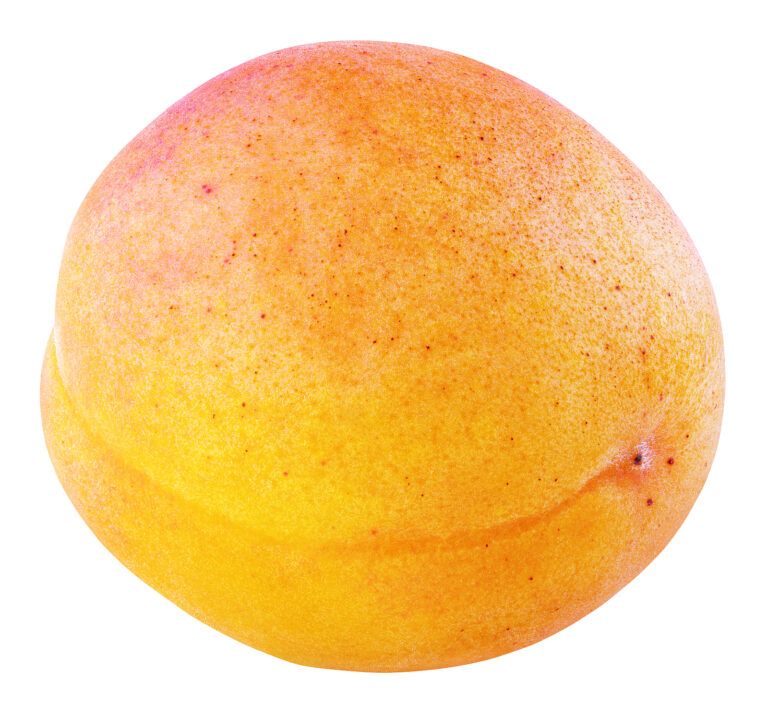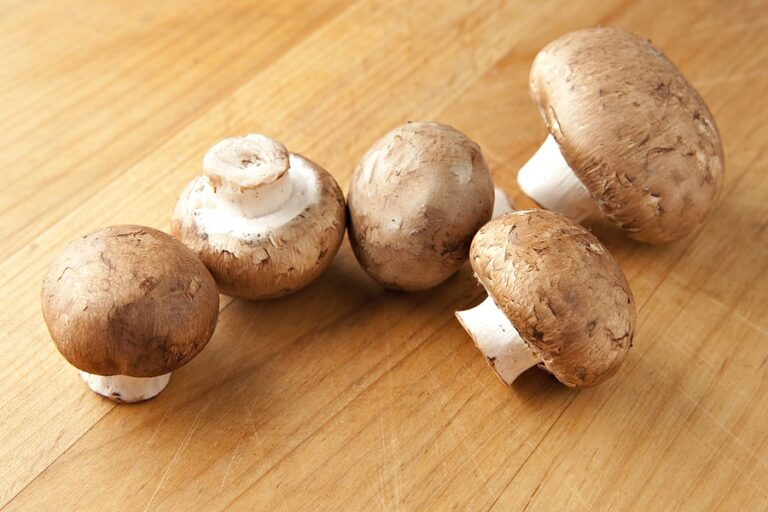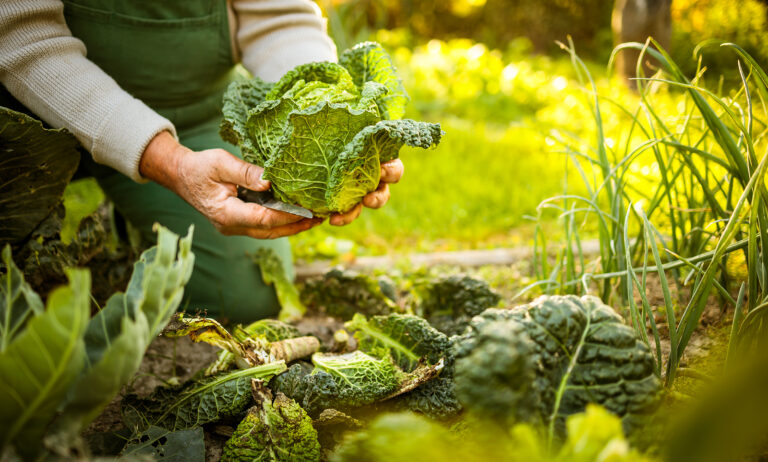Five Ways to Cook and Serve Chinese Cabbage
Chinese cabbage can be eaten raw or cooked–steamed, boiled, and quickly stir-fried. Cooked leaves and stalks add flavor to soups, stews, pasta dishes, and stir-fries.
Chinese cabbage is a general name for several varieties of thick-stalked and green- or pale green-leaved vegetables that fall under the even more generic name Chinese leaves. Chinese leaves are sometimes also called celery cabbage.
Chinese leaves are known more specifically by their varietal or type names such as wong bok or Napa cabbage, Michihili, and pe-tsai.
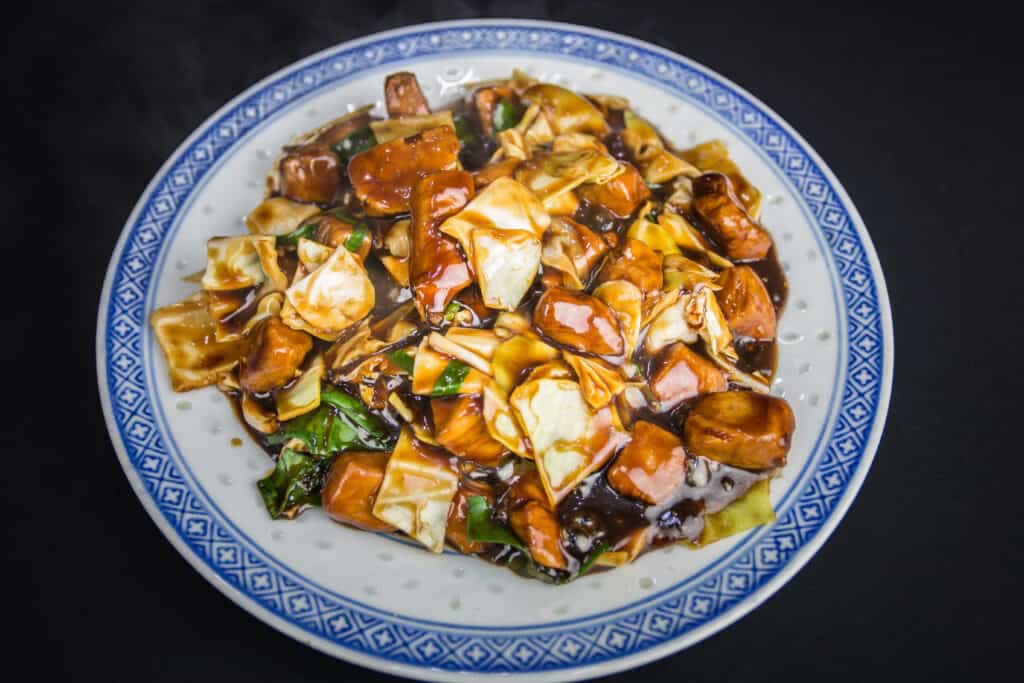
Each of these varieties of Chinese cabbage is sweet tasting with a slight mustard tang. They offer a mild alternative to the stronger flavored European cabbages.
The leaves of these vegetables are thinner than the waxy leaves on round-headed cabbages. They are more delicate, require very short cooking times, and offer tasty last-minute additions to stir-fries, steamed dishes, and soups. They can also be eaten raw as additions to salads.
The upright stalks of these vegetables look like pearly wide ribs.
Types of Chinese cabbage
There are three general types of Chinese cabbages or Asian cabbages in the Pekinensis group: the “tall cylindrical,” the “hearted’ or “barrel-shaped,” and the “loose-headed.”
The tall cylindrical type has long, upright leaves that form a tapering head. These varieties are generally referred to as Michihili, the name of one popular tall cylindrical variety.
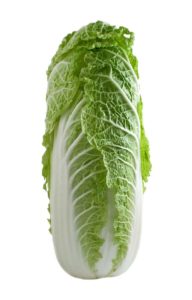
- Michihili is a semi-heading vegetable—the leaves may turn slightly inwards or outwards–that looks something like a head of cos lettuce. Michihili can grow to 18 inches (45 cm) tall. It is quite mild-flavored and can absorb the flavors of the vegetables, meats, and poultry it’s cooked with. The hearted or barrel-shaped types of Chinese leaves form a compact head with tightly wrapped leaves around a dense heart. These are commonly referred to as wong bok or Napa cabbage.
- Wong Bok or Napa Cabbage is stout to about 10 inches (25 cm) tall. Napa cabbage is the most popular of Chinese leaves. napa is a tender and very sweet-tasting cabbage. The loose- or open-headed type of Chinese leaves has a lax demeanor with outwardly floppy textured leaves. The best known of this type is called pei tsai.
- Pei Tsai is loose-headed and does not form a heart. Pei tsai is slightly cylindrical with a ruffled appearance and grows to about 12 inches (30 cm) tall. This cabbage has a tangy-sweet but not spicy flavor and is favored by home gardeners who benefit from its cut and come again harvest.
There are dozens of cultivars that belong to each of these three types of Chinese cabbage. None looks exactly the same, though all conform in some manner to the general description of their type.
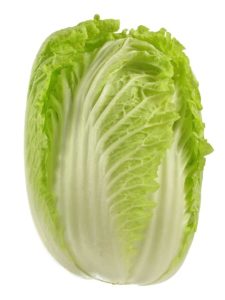
How to choose Chinese cabbage
- Select Chinese cabbages that are compact, firm, crisp, and fresh. There should be no brown spots on the ribs. Avoid greens whose leaves are slightly wilted or exhibit brown spots.
- If you are not exactly which Chinese leaves will work point and choose or ask your farm grower which Asian vegetables are being grown in your region.
How to store Chinese cabbage
- Chinese cabbage is best used in 3 or 4 days.
- Napa cabbage will keep for 2 weeks if tightly wrapped in plastic and placed in the vegetable drawer of the refrigerator.
- Crisper leaves will be more flavorful.
How to prep Chinese cabbage
- Wash Chinese cabbage just before using them.
- Remove the desired number of leaves and trim the base of each, wash, drain, and use cooked or raw.
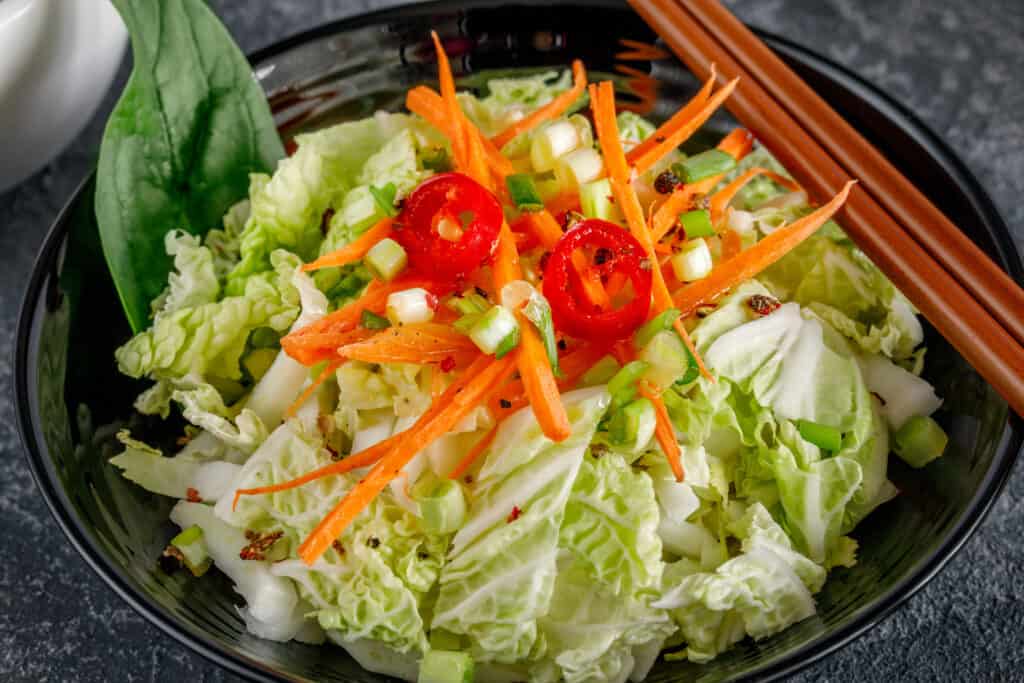
Chinese cabbage serving suggestions
- Chinese cabbage can be steamed, boiled, quickly stir-fried, or eaten raw. Cooked leaves and stalks add flavor to soups, stews, pasta dishes, and stir-fries.
- Use succulent central ribs raw: slice or coarsely shred for salads or slaws, or cut into strips for raw-vegetable platters. The crisp raw ribs can replace celery in salads.
- The leaves blend well in green salads, with lettuce, green peppers, celery, or tomatoes.
- For hearted Chinese leaves, such as wong bok or Napa, separate the leaves from the central core. The core can be sliced and eaten.
- Marinate Chinese leaves and serve as a salad side dish. To marinate: chop stalks and leaves coarsely, sprinkle with salt, leave to sweat for a few hours, stir occasionally until slightly soft, drain thoroughly, and add 2 or 3 crushed garlic cloves, a little grated ginger, finely chopped scallions, and rice vinegar, soy sauce and a pinch of sugar, salt, and cayenne pepper.
- Because of its delicate taste, Chinese cabbage is a good choice for wrapping fish that you plan to steam or for lining the bottom of a bamboo steamer basket. Its sweet flavor will not distract from other vegetables, fish, or poultry that you use.
- In Korea, China, and Japan, Chinese leaves are used to make fermented and salted pickles.
Chinese cabbage cooking suggestions
- Separate central ribs and puffy leaf parts for most cooked dishes. Cook the rib sections lightly like celery to your texture preference: crisp raw, tender-crunchy, silky-soft overcooked. You can cut the stalks in half or quarters or cut in sixths length-wise for braising.
- For stir-fry, salads, or soups, separate the leaves in julienne strips, wide ribbons, or squares.
- Add ribbons to the broth during the last few minutes of cooking or simmer for a longer period of time in thick, stewy soups. Dice the crisper narrow stalks for a celery-like addition.
How to steam Chinese cabbage
- Add a few inches of water to a pot then insert a steamer basket. The water should not touch the bottom of the steamer basket.
- Bring the water to a simmer over medium-high heat.
- Add whole or shredded leaves and cover.
- Steam until tender, about 4 or 5 minutes.
How to boil Chinese cabbage
- Shred or cut the head in halves or quarters.
- Bring a lightly salted pot of water to a boil.
- Put cabbage in the pot and boil for about 3 to 5 minutes for shredded leaves, about 10 minutes for halves and quarters.
- Remove the cabbage with a slotted spoon and dry on a kitchen towel or a paper-towel-lined plate.
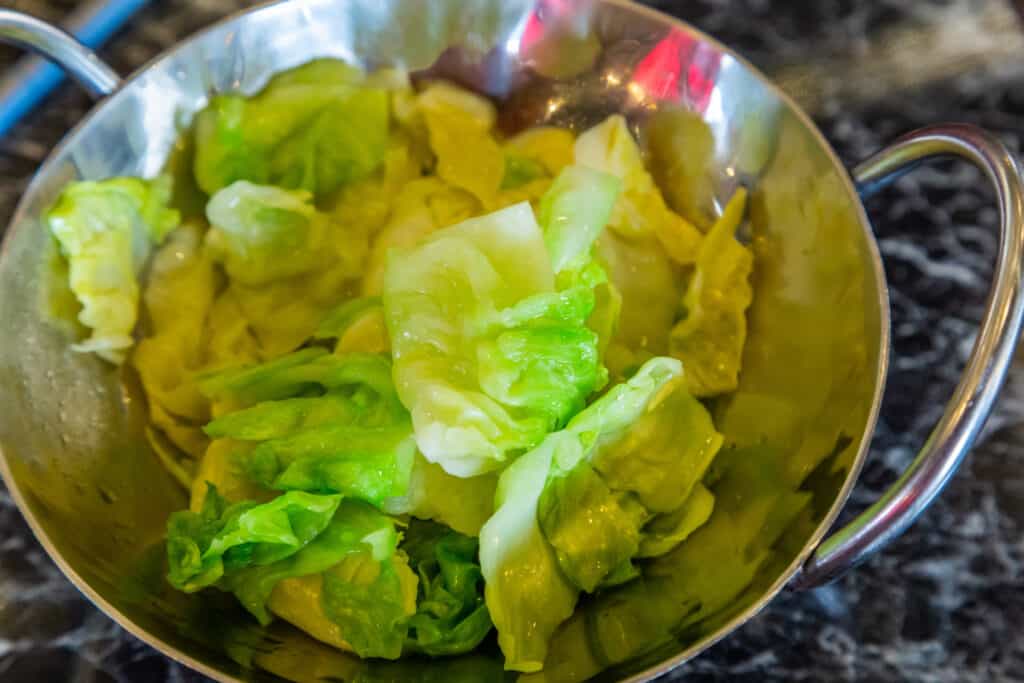
How to stir-fry Chinese cabbage
- Tear or shred leaves.
- Heat 2 tablespoons of vegetable oil in a wok.
- Add the leaves and 2 sliced garlic cloves.
- Stir-fry until the leaves start to wilt then add a quarter cup or slightly more vegetable stock.
- Cover and cook for 3 minutes or until just tender.
How to sauté Chinese cabbage
- Place a tablespoon of oil in a large skillet and place over medium-high heat.
- Add thinly sliced, shredded, or small whole leaves and season with soy sauce or salt and pepper.
- Cook, stirring often, until the leaves are tender, about 10 minutes.
Chinese cabbage nutrition
- Chinese leaves are a good source of vitamin C, folic acid, and potassium, and contain some vitamin A.
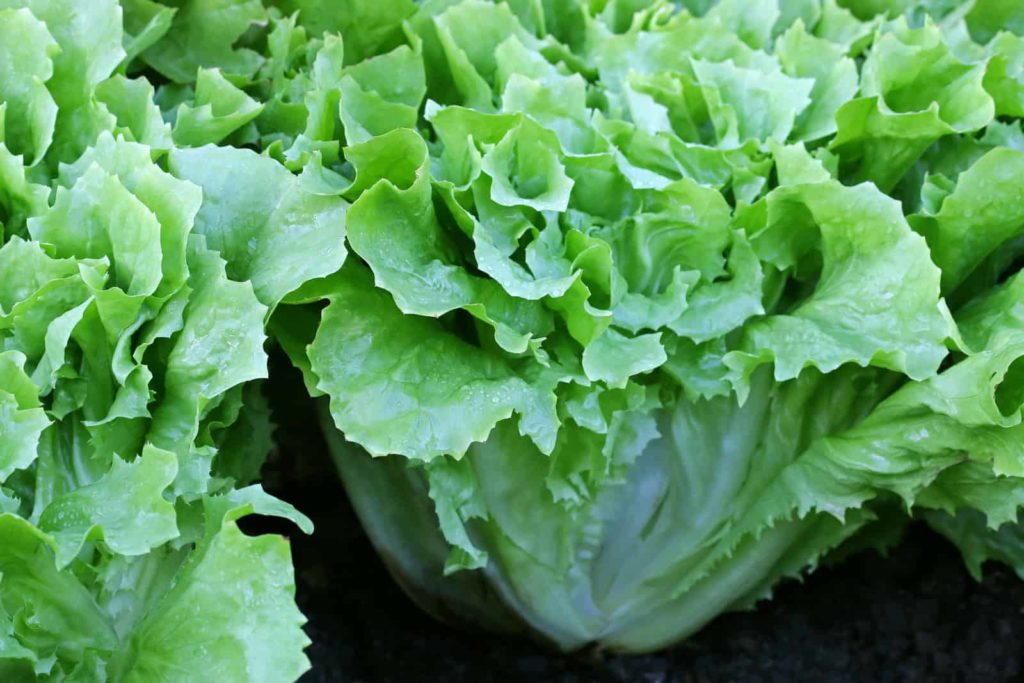
More about Chinese cabbage
- Chinese leaves are members of the Pekinensis group of the genus Brassica. Brassicas include cabbage, kale, Brussels sprouts, cauliflower, broccoli, kohlrabi, mustard, rutabaga, and turnips.
- There are hundreds of Asian members of the Brassica genus. It is believed that Chinese leaves originated as a cross between bok choy and turnip.
- All of the Chinese leaves varieties are believed to have originated in China thousands of years ago. They were spread throughout Asia by Chinese traders and were first introduced to Europe in 1751 by returning missionaries. Chinese leaves were regarded as curiosities in Europe and never gained general cultivation.
- Chinese leaves were re-introduced to Europe again in the 1970s by Israeli farmers and came into commercial cultivation in California’s Napa Valley at about the same time. Known for many years under the generic names Chinese cabbage, Chinese leaves, and celery cabbage, they are now beginning to appear under their more specific varietal names.
Cabbage Learning Hub
🥬 Start Here: The Ultimate Cabbage Growing Guide: From Seed to Harvest
🌿 Planting & Timing
- Cabbage Seed Starting Tips
- When to Plant Cabbage: Timing for Spring, Summer, and Fall Crops
Covers zone-based timing, transplant vs. direct sow. - How to Grow Spring Cabbage for Early Harvests
“Spring cabbage growing” – high seasonal interest. - How to Grow Cabbage in Containers: A Complete Guide
Perfect for urban/small-space gardeners. Include spacing, soil depth, and feeding. - How to Space and Thin Cabbage for Tight, Heavy Heads
Spacing is a common problem leading to poor heads or bolting.
How to Plant, Grow, and Harvest Chinese Cabbage
🦟 Pests, Diseases & Troubleshooting
- Common Cabbage Pests and How to Get Rid of Them Naturally
Aphids, cabbage worms, flea beetles, cutworms. - Why Is My Cabbage Splitting? Causes and Fixes for Cracked Heads
Very specific problem; here’s why this happens. - How to Prevent Bolting in Cabbage and Other Brassicas
Seasonal temperature swings confuse many gardeners.
💧 Care & Growing Tips
- How Much Water Does Cabbage Need? A Seasonal Watering Guide
“How often to water cabbage” queries are common. - How to Fertilize Cabbage for Leaf Growth and Head Formation
Discuss starter fertilizer, side-dressing, nitrogen balance.
What to plant with cabbage. - Common Cabbage Pests and Diseases and How to Treat Them Naturally
🧊 Harvesting, Storage & Preservation
- How to Harvest and Store Cabbage
- How and When to Harvest Cabbage for Peak Flavor and Texture
Includes signs of readiness and how to cut heads without damagin - Best Companion Plants for Cabbage (And What to Avoid)g the plant.
🥗 In the Kitchen & Beyond
- Seven Ways to Cook and Serve Cabbage
- Five Ways to Cook and Serve Chinese Cabbage
- Four Ways to Cook and Serve Napa Cabbage
🌱 Varieties & Seed Saving
- Best Cabbage Varieties for Your Climate and Growing Zone
Optimized for zone-specific growing.
- Savoy, Napa, and Red: Which Type of Cabbage Should You Grow?
Comparative format — helpful for new gardeners. - Growing Green Cabbage vs. Red Cabbage: The Differences
- Oriental Mustard Cabbage Explained: White Stalks vs. Green Stalks
Related articles:
How to Plant, Grow, and Harvest Chinese Cabbage
Five Ways to Cook and Serve Chinese Cabbage
Four Ways to Cook and Serve Napa Cabbage
Five Ways to Cook and Serve Bok Choy
How to Plant, Plant, Grow, and Harvest Mizuna
Ways to Prepare and Serve Mizuna
How to Cook and Serve Bitter Melon
Also of interest:
Articles of interest:
Best Herbs for Container Growing
Garden Planning Books at Amazon:
- Vegetable Garden Almanac & Planner
- Kitchen Garden Grower’s Guide Vegetable Encyclopedia
- Vegetable Garden Grower’s Guide
- Tomato Grower’s Answer Book
More kitchen tips:
Bring your harvest to the table. Kitchen prep tips and easy recipes for the vegetables you grow. Click below for vegetable prep and recipes you can use now.
- Almonds
- Apples
- Apricot
- Aprium
- Artichoke
- Arugula
- Asparagus
- Avocado
- Bamboo Shoots
- Banana
- Basil
- Beans, Dried
- Beans. Long
- Beans, Shell
- Beans, Snap
- Beets
- Bitter Melon
- Blackberry
- Bok Choy
- Broccoli
- Broccoli Raab
- Brussels Sprouts
- Cabbage
- Cardoon
- Carrots
- Cauliflower
- Celeriac
- Celery
- Chard
- Chayote Squash
- Cherimoya
- Cherries
- Chestnut
- Chickpea
- Chinese Cabbage
- Chives
- Cilantro
- Citron
- Clementine
- Collards
- Coriander
- Corn, Sweet
- Corn, Baby
- Corn Salad, Mache
- Cranberry
- Cress
- Cucumber
- Daikon
- Dandelion
- Dill
- Eggplant
- Endive, Belgian
- Endive and Escarole
- Fava Beans
- Fig
- Florence Fennel
- Garlic
- Ginger
- Grapefruit
- Grapes
- Guava
- Horseradish
- Jerusalem Artichoke
- Jicama
- Jujube
- Kale
- Kiwifruit
- Kohlrabi
- Kumquat
- Leeks
- Lemongrass
- Lemons
- Lettuce
- Lime
- Mache (Corn Salad)
- Mandarin Orange
- Mango
- Maple Syrup
- Marjoram
- Melons
- Michihili
- Mint
- Mizuna
- Mushrooms
- Mushrooms, Cremini
- Mustard Greens
- Napa Cabbage
- Nectarine
- Okra
- Olives
- Olive oil
- Onions
- Oranges
- Oregano
- Parsley
- Parsley Root
- Parsnips
- Passion Fruit
- Pawpaw
- Peaches
- Pears
- Peas, Garden Snap
- Peas, Snow
- Pei Tsai
- Peppers, Chili
- Peppers, Sweet
- Persimmon
- Pineapple
- Pineapple Guava
- Plantain
- Plums
- Pluots
- Pomegranate
- Potatoes
- Prickly Pear
- Pumpkin
- Quince
- Radicchio
- Radishes
- Raspberries
- Rosemary
- Rhubarb
- Rutabaga
- Sage
- Salsify
- Sauerkraut
- Savory
- Shallots
- Sorrel
- Spinach
- Squash, Summer
- Squash, Winter
- Strawberries
- Sunchokes
- Sunflower
- Sweet Potato
- Swiss Chard
- Tangerine
- Taro
- Tarragon
- Thyme
- Tomatillo
- Tomato
- Turnip
- Turnip Greens
- Yams


